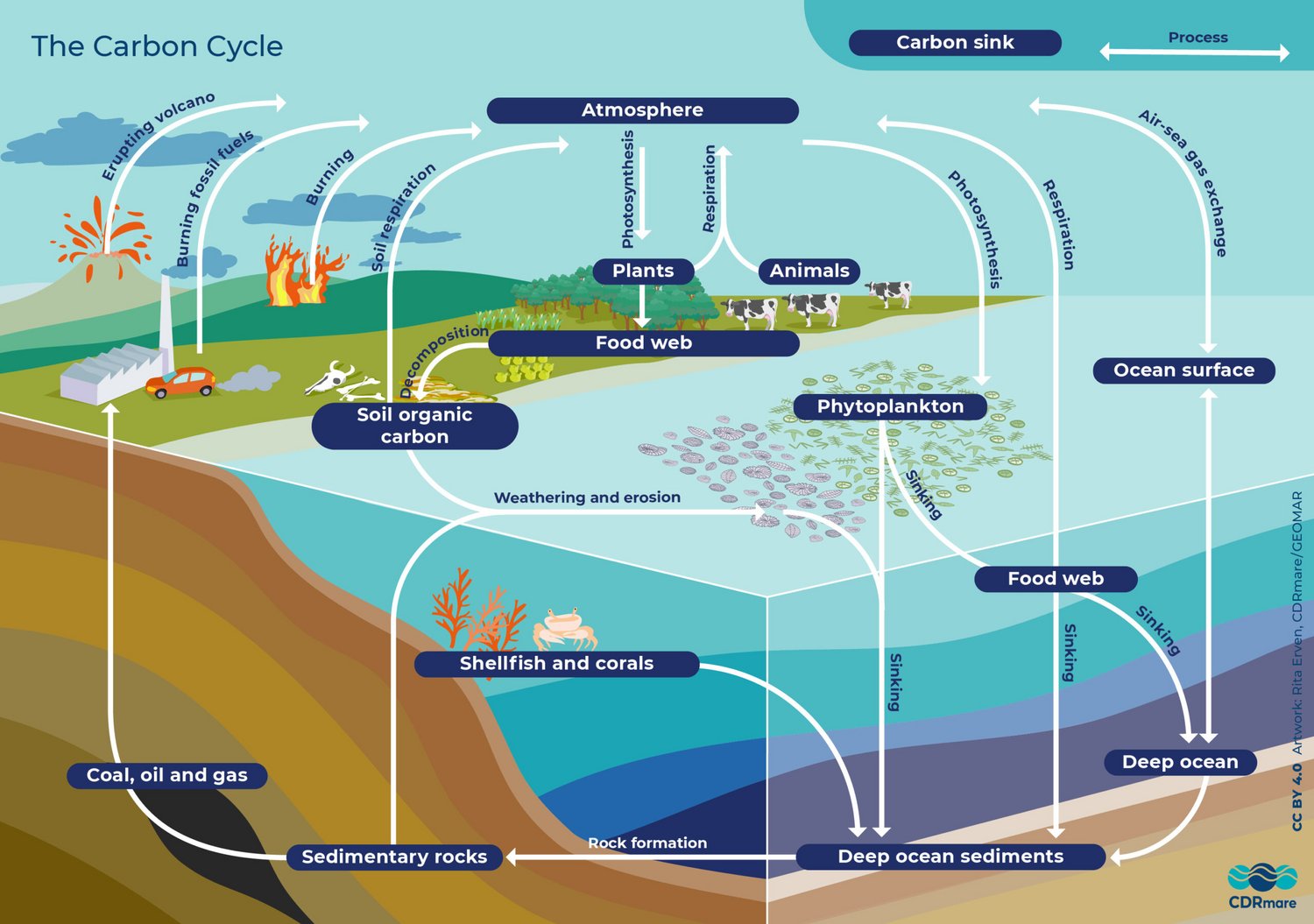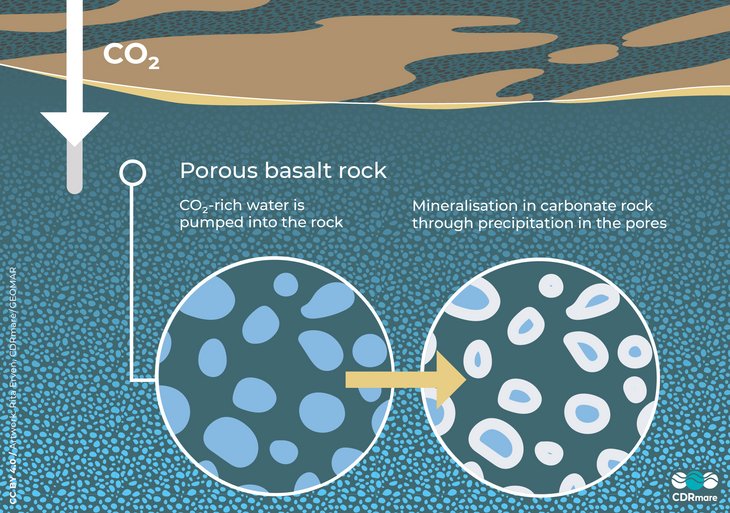We have only become aware in recent decades that the oceans play a crucial role in the Earth's climate system and that the changes of marine ecosystems are a result of climate change. In its fifth assessment report, which was published in 2014, the Intergovernmental Panel on Climate Change dedicated a separate chapter on the consequences of climate change to the world's largest habitat and possible adaptation strategies for marine life.
The perception of the sea has changed. The ocean has become a beacon of hope and is now understood as a guidance out of the climate crisis. This is because the seas and oceans are natural carbon sinks. They absorb carbon dioxide (CO2) from the air and bind it. The oceans have stored around a quarter of all CO2 emissions released by humans in the last decades. The idea is: if the natural carbon dioxide absorption of the oceans could be increased specificly, it may be possible to offset some of the human induced greenhouse gas emissions that are difficult to avoid and thus, limit the increase of global warming.
The extent, to which an increase in CO2 uptake is actually possible and effective in the long term is currently being investigated in several research projects. There are basically two directions: on the one hand, considerations to increase the natural absorption capacity and on the other hand, using the seabed and ocean rocks as a storage area.
Increase natural storage capacity
To understand how the seas and oceans absorb and store CO2 from the air, it helps to take a look at the carbon cycle. For example, plants in the sea, such as algae, use carbon dioxide to grow. Animals incorporate it into their bodies. When plants and animals die, their remains sink into the depths with the bound carbon.
Strategies for increasing the carbon dioxide uptake by the oceans aim to influence natural physical, chemical and biological processes in the sea in a way that the oceans and its coastal ecosystems, such as mangroves or seagrass beds can absorb more carbon dioxide and store it at great depths or underground.
The methods being currently discussed include for examplees the large-scale restoration and expansion of salt marshes, seagrass beds and mangrove forests. In some places, these coastal ecosystems store more carbon dioxide underground than rainforests on land. If these are ecosystems that have previously been destroyed, the restoration may not only contribute to climate protection but also to local biodiversity and coastal protection. The approach of restoring vegetation-rich ecosystems on the coasts is discussed under the title Blue Carbon.
There are also considerations and experiments in greening seas and oceans. The growth of algae is limited on the surface of the open ocean because there is naturally a lack of nutrients in this area. On the contrary, there are more nutrients available in the deep sea. The idea is to pump nutrients from the deep sea into the surface water to stimulate the growth of algae, thus creating an artificial upwelling. However, the benefits of this method are controversial.
Technical solutions such as injecting carbon dioxide into the deep layers of rocks under the sea are also being investigated and increasingly practised. The carbon dioxide used in this process is usually captured during natural gas extraction and other industrial processes to prevent its release into the atmosphere.
According to experts, storing this carbon dioxide deep underground in the sea is less risky than injecting it on land.
There are several storage methods: One is the injection of carbon dioxide into depleted natural gas or oil fields under the North Sea. Another method includes the gas being injected into the upper basalt layer of the ocean crust. The latter consists of a highly reactive, porous material, and it is hoped that the CO2 will rapidly mineralize.
One variation is to inject the gas into deeper sandstone formations. The CO2 may then spread out in the pores between the individual grains of sand and mineralize over the course of thousands of years. Both storage methods require a dense barrier of clay or salt rock between the rocks and the environment to prevent the CO2 from leaking. There are currently various research projects on this topic such as CDRMare. Norway and Iceland are already practicing these methods.
However, all of these processes are associated with risks. It must be ensured that the CO2 is stored safely and does not end up in the seawater. Storage sites have to be monitored and new underwater noise is additionally created. Furthermore, many parts of our oceans are already (over-)utilized, and a new technology will cause even more pollution for the marine environment. That is the reason why these methods are discussed highly controversial.



![[Translate to English:] Cumulonimbus Wolke über Meereshorizont vom Forschungsschiff Sonne aus fotografiert.](/fileadmin/_processed_/4/d/csm_2_Kategorie_Klimawandel_Ralf_Prien_IOW_f308efb8cb.jpg)






